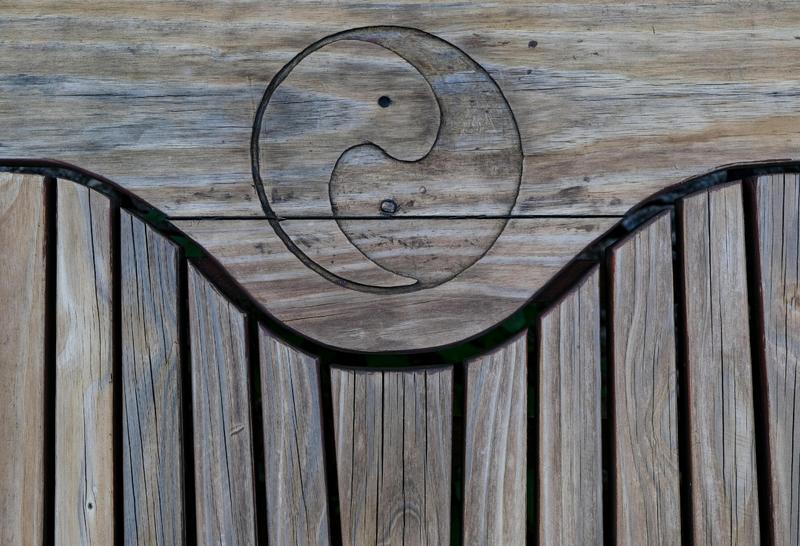Feeling Overwhelmed by the "State of the World?”

Have you ever caught yourself doom-scrolling, feeling this creeping sense of dread about the state of the world? Maybe it’s the economy, politics, climate change, global conflict—everywhere you turn, there’s another reason to feel overwhelmed.
And it’s not just the headlines. You see it in people—the stress in their voices, the tension in their bodies, the way conversations spiral into frustration and fear. It’s like a collective storm of anxiety that never clears.
Maybe you’ve even thought: "How am I supposed to feel okay when everything seems to be falling apart?"
That’s what we’re diving into today. Because the truth is—yes, the world is going through change. But your internal state doesn’t have to be at the mercy of the chaos around you. And more importantly, if we actually want things to change, it starts with how we feel.
The Trap of External Chaos
Let’s be honest—our minds love certainty. We want to feel like we understand what’s happening, like we have control. So when things feel unpredictable, we grasp for something to hold onto.
That’s why so many people attach themselves to the doom narrative—not because they want to feel bad, but because fear at least feels certain. There’s a sense of “If I can predict disaster, maybe I can protect myself from it.”
But here’s the problem: When we live in that state of stress, we’re not actually thinking clearly. Neuroscience shows that fear hijacks the brain—shutting down creativity, problem-solving, and the ability to connect with others.
Instead of making us more prepared, it makes us reactive. Defensive. Stuck.
Ever notice how two people can read the same news story and have completely different emotional reactions? One spirals into despair, the other stays grounded. Same world. Same events. Different internal state.
So the real question isn’t, "What’s happening in the world?"—it’s "How am I relating to what’s happening?"

The Illusion of Control
There’s an old Daoist saying:
"Trying to control the world? I see you won’t succeed. The world is a spiritual vessel, and it cannot be controlled. Those who try will fail. Those who grasp will lose."
It’s not saying, “Do nothing.” It’s pointing to a deeper truth: When you act from fear, you actually become less effective.
Think about it—have you ever made a great decision when you were panicked? Ever had a deep, meaningful conversation when you were angry? Ever felt truly at peace while obsessing over things outside of your control?
Of course not. Because the state we’re in shapes the results we get.
When we’re locked in fear, we react instead of respond. We get lost in arguments instead of solutions. We exhaust ourselves mentally and emotionally but don’t actually change anything.
When to Take Inspired Action
This is where people get stuck. They think, "If I stop worrying, I’m just ignoring reality." But letting go of stress doesn’t mean apathy—it means shifting into a state where you can actually create change.
Think about moments in your life when you’ve made a real impact—when you’ve helped someone, solved a problem, stepped into leadership.
Were you panicked? Frozen in fear? Or did you feel clear, steady, and intentional?
Taking action from alignment is completely different than acting from stress.
And alignment doesn’t mean passivity—it means seeing reality as it is, then choosing your next step from a centered place.
Ask yourself:
- Am I reacting or responding?
- Is this coming from clarity or fear?
- Will this action expand my sense of peace, or deepen my stress?
That’s the difference. Inspired action feels clear, even if it’s uncomfortable. Fear-based action feels urgent, frantic, and exhausting.
If you truly want to contribute to a better world, your first responsibility isn’t just “doing more.” It’s being more—more aware, more intentional, more steady.

Reflection
Imagine waking up tomorrow feeling calm and focused, even in a world that’s still uncertain. Imagine being able to listen to someone with an opposing viewpoint and stay grounded. Imagine knowing exactly when to take action and when to let go.
That’s not wishful thinking. That’s training. It’s how you show up internally that determines your impact externally.
I had a client recently who was feeling completely drained. Every day, they’d wake up and scroll through bad news, get into debates online, and feel more and more disconnected from their own life. It wasn’t that they didn’t care—it’s that they were burning themselves out without actually making a difference.
The shift came when they started focusing on their own state first. Instead of jumping into the stress cycle, they learned to pause, reset, and then decide how to engage. And guess what? They became more effective. Their conversations with friends and family became more constructive. They started putting energy into things that actually mattered to them.
And most importantly? They felt better.
An Invitation
So I’m curious—how do you navigate staying informed without getting lost in negativity? Have you noticed a difference in how you feel when you take action from stress vs. from clarity?
If this resonated with you, and you’re ready to deepen your ability to stay steady and intentional no matter what’s happening around you, I have a training that helps you build that skill set. It’s about shifting from stress-driven reactions to clear, aligned responses. You can find more details here.
And if you want more insights like this, I share a lot of free resources on Instagram @mikewangcoaching, plus a weekly newsletter where I break down these topics even deeper. Feel free to check those out if that sounds helpful to you.
